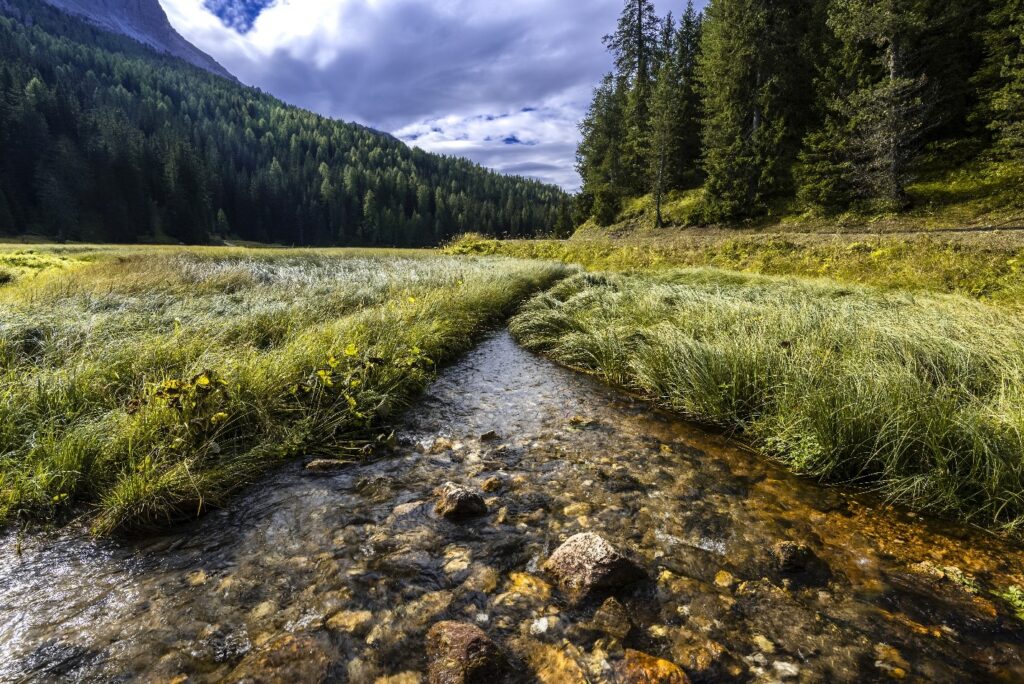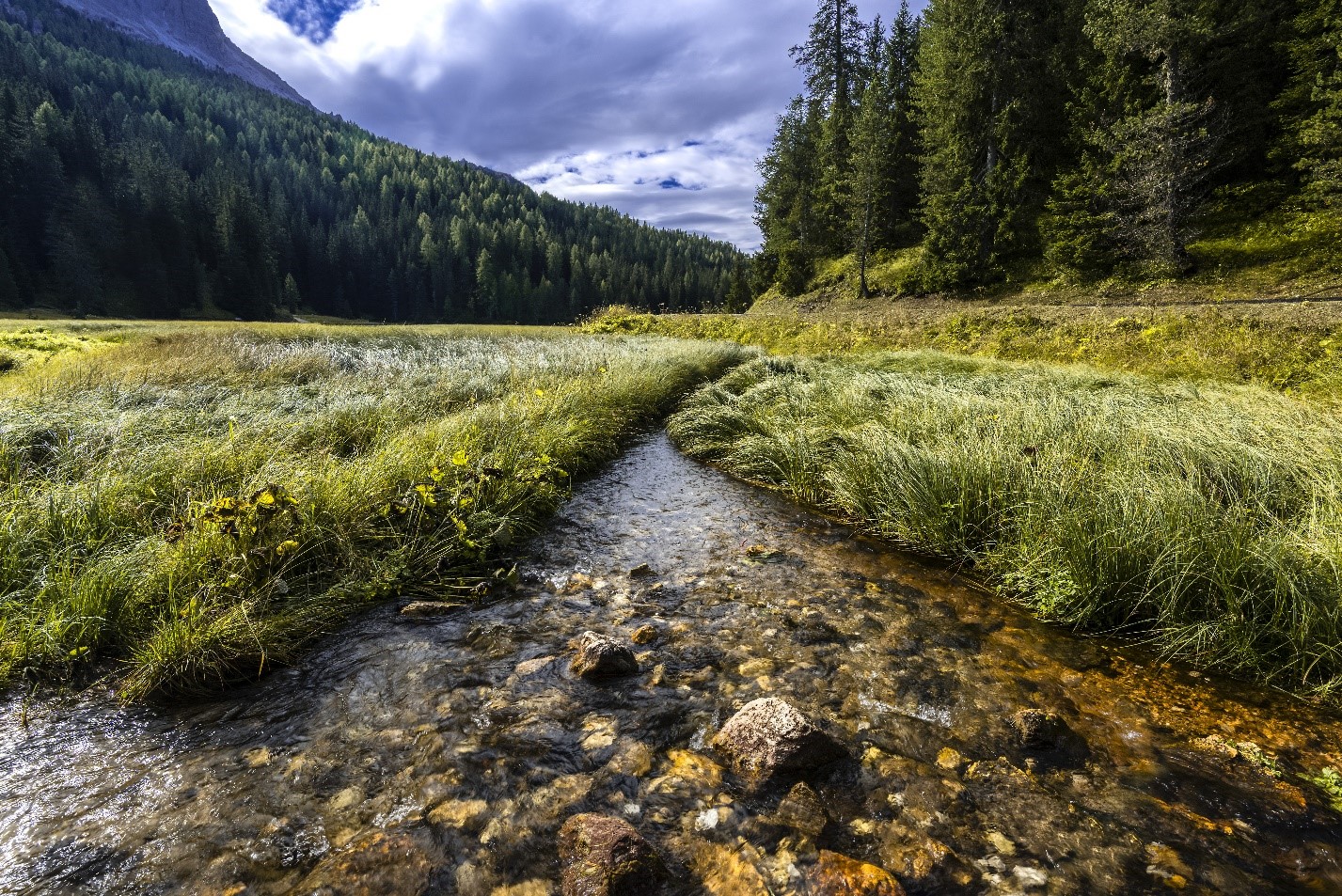
By John Phillips, ENV SP
On April 15, 2019, The United States Environmental Protection Agency and Army Corps of Engineers closed the public comment period on a rulemaking process to redefine “waters of the United States.” This definition has been an on-going discussion in the watershed management community for several decades.
What is the Clean Water Act?
Let’s start at the beginning by giving some background on the Clean Water Act. The Clean Water Act establishes the basic structure for regulating discharges of pollutants into the “waters of the United States.” The law was enacted in 1948 and was originally called the Federal Water Pollution Control Act but was significantly reorganized and expanded in 1972. “Clean Water Act” became the common name with amendments in 1972. The law has since prevented pollution from industries and created a massive investment in wastewater infrastructure, improving water quality in many rivers, streams, lakes, and oceans.
Under the Act, the definition of “waters of the United States” is set by the Corps of Engineers and EPA through joint rulemaking procedures. Rulemaking is controversial; a rule is published and then implemented, then a lawsuit challenging the “agreed upon” rule further complicates the definition. The definition has been challenged and redefined many times in the past through the agencies. Under a 1984 Supreme Court ruling, the courts have generally left the rulemaking to the agencies with the expertise to define the law. That relieves courts from navigating in unfamiliar water, so to speak…
Until recently.
History of “Waters of the United States”: Rapanos v. United States
In order to understand the recent ruling, let’s dive into the history of the definition of “waters of the United States.”
In a court case involving the filling of wetlands in Michigan, the land owner was issued a Clean Water Act violation by the Corps of Engineers. The violator sued, and the case, known as Rapanos v. United States, went to the Supreme Court in 2006. In the Rapanos case, the court split 4-1-4. The ruling opinion suggested a very narrow interpretation of the law, citing the Webster dictionary on the desk of Justice Scalia issuing the ruling opinion. In the dictionary (Webster’s 2nd Edition, 1954) “waters” is defined as “water as found in streams, oceans, rivers, lakes, and bodies of water forming geographical features.”
Justice Kennedy concurred but added that the hydrology of these waters was important too. He added the words “significant nexus” to waters of the United States. The dissenting opinion by Justice Stevens said agencies like the Corps of Engineers or EPA should implement statutes they’re charged with administering. He fact-checked Scalia on hydrology and criticized him for focusing on regulatory costs while ignoring the costs of degradation. How a wetland is defined became narrower and groundwater was just left out.
The case ended with Rapanos paying a fine of $1 million to the EPA without admitting to violating the Clean Water Act.
After the Rapanos case, the EPA worked on guidance for interpreting the Court prevailing decision. Lawsuits were filed by environmental groups wanting a broad definition and by industries wanting a narrower definition. Judges, regulators, and project proponents and opponents struggled for years to interpret the opinion of the Supreme Court.
Obama Administration Creates New Waters of the United States Rule
In 2011, President Obama faced pressure from environmentalists and the industry to straighten out the “waters” definition. He asked the Corps of Engineers and EPA to begin the process of creating a science-based rule for determining what are and what are not the waters of the United States.
To create the Waters of the United States rule (WOTUS) also known as the Clean Water Rule, the EPA asked hydrologists and wetland scientists to gather all scientific information on waterways. In 2013, the first draft of the rule was available for scientific review and comment. In 2014, the Corps of Engineers and EPA published the first draft of the rule and allowed for 200 days of public comment. The comment period drew over one million responses and each comment was addressed individually.
The final rule was issued in April 2015 and divided water into six categories of jurisdiction by rule and two categories of case by case. Again, leaving some interpretation, but covering significantly more “waters,” including many forms of wetlands and groundwater.
The Clean Water Rule was set to come into effect August 2016 but before it did, a federal judge issued a nationwide stay to executing the rule. The Obama administration was preparing to defend the rule in October 2016.
After President Trump was elected in November 2016, one of his first acts was to rescind the WOTUS rule and issue a new order to define the rule to align with the Scalia/Kennedy opinion.
In the interim time, 22 states, US territories and Tribes were operating under the 2015 rule and interpretation.
EPA And Corps of Engineers Issue New Rule Under Trump Administration
The EPA and Corps of Engineers went back to the rule making process, first rescinding the 2015 WOTUS rule and then issuing a new rule striking many of the waters covered under 2015. Eighty percent of the waters covered under the 2015 rule are no longer covered and states would be responsible for any regulations covering those waters if they choose to. The 60-day comment period on the new rule ended April 15, 2019.
Impacts of the New Ruling
Without a doubt there will be another chapter in this story as the current rulemaking was interpreted by some as insufficient compared to the rule making in 2015 and by nature not progressing toward improving water quality throughout a watershed.
Consider the impacts of these decisions. Based on the natural water cycle any pollution can find its way into a waterway through any number of pathways and inconsistency in the way laws are applied throughout different states may make it difficult to gain ground on improving water quality and improving habitat. How the rule will impact regulations for entities with permits versus those that are not regulated is not known. The burden of water quality could fall again on regulated entities, like municipalities with National Pollutant Discharge Elimination System permits, as the rule goes into effect. The rule also creates a divide between state and federal agencies, state-by-state, on how waters are regulated by removing some waters from federal regulations, but not state regulations.
What’s Next?
Bottom line is that all water has value and should be managed in an inclusive and sustainable way.
Under the Integrated Watershed Management Initiative at Parametrix, we strive to find innovative ways to make improvements to watersheds through improving water quality, addressing water quantity, improving habitat and addressing aging infrastructure. We do this while being mindful of the impacts from climate change and keeping infrastructure affordable.
Further Reading:
AASHTO Journal: Proposed WOTUS Redefinition Would Provide Regulatory ‘Clarity’
The Waterways Journal: States Push Back on Clean Water Act Order
ACEC Last Word: ACEC Supports New Direction in Federal Wetlands Policy
Ecology: We Oppose Federal Proposal to Redefine ‘Waters of the United States’
About the Author

John Phillips, ENV SP
Director of Integrated Watershed Management
John began working for Parametrix in 2019 as the Director of Integrated Watershed Management. John guides the firm’s integrated approach to natural resources and infrastructure development in watershed planning, management, restoration, and climate change adaptation. John also assists clients in the identification and development of solutions for combined and sanitary sewer overflows to meet consent decree and discharge standards.
Prior to joining Parametrix, John worked for King County managing the Combined Sewer Overflow Control Program. Over his 19-year career, he has also managed Green Stormwater Infrastructure and Climate Change Adaptation programs. His climate work has been referenced in both the IPCC and National Climate Assessment reports. He is Past President of the Pacific Northwest Clean Water Association. John has a Bachelor of Science Degree in Environmental Science from Oregon State University and served six years as a sonar man in the U.S. Navy on-board nuclear submarines.


